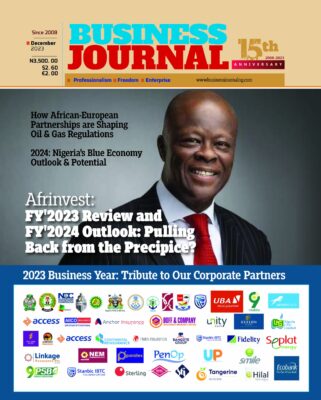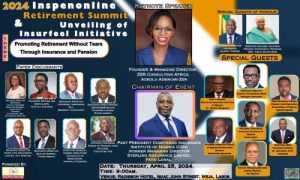This is the story of a national titan, who offered service to the nation for over 40 years. In these years, in keeping with the social responsibility philosophy of its establishment, “WT” (Whisky Tango), as it was fondly recognised in the global aviation circle, flew daily sorties in addition to scheduled operations to advance the aspirations of a new nation.
Between 1960 – 1975, Nigeria Airways announced, publicised and projected the image of a new independent black African nation. From Europe to America, from Africa to Middle/Near East, the Nigerian flag flew on WT. It not only brought pride to the nation and its people, but also raised their profile globally at a time when very few nations of the world were in the global air space.
Between 1975 and 1985, at the height of the struggle for African liberation when Nigeria’s vibrant foreign policy and role made her a frontline-state in the struggle against apartheid, WT was one of the sharpest instruments of our foreign policy.
From Angola to Mozambique and Tanzania, the erstwhile national carrier carried out supportive operations to re-enforce Nigeria’s role in the liberation struggle. Between 1985 and 2000, it operated flights to Australia, New Zealand, America, China and Africa carrying Nigerian sports men and women for Commonwealth, Olympic and All-African Games as well as FIFA World Cup.
It flew rescue flights for stranded and injured Pilgrims back from Israel and Jeddah. For over three decades, like a colossus, it bestrode the nation’s aviation industry, connecting cities and towns across the country, West and East Coasts of Africa.
This is the story of Nigeria Airways (WT) that built a very firm foundation for the vast and highly reputable technical manpower upon which the nation’s aviation industry rests even up till now.
This is the story of a national carrier that was sacrificed at the altar of ego, personal interest and inordinate ambition and aspirations of those who desired, not only to create their own airline but also plunder the vast properties of an airline whose assets were three times its liabilities at the time of its liquidation. The story is one of a sad commentary on the Nigerian nation. In May 2003, at the valedictory meeting of the Federal Executive Council, marking the end of the first term of the Obasanjo administration, against the usual traditions of such end-term meetings which normally would be for reflections, banters and well wishing, two memos of far-reaching consequences were tabled for deliberation.
The first of the twin memos was for the liquidation of the then national carrier “Nigeria Airways” and the second was for the floatation of a replacement national carrier named “Nigerian Global”. It was the then Minister of Aviation, Dr. Kema Chikwe, who, certain of a return, still as Aviation Minister in Obasanjo’s second term, pushed the memos for FEC’s approval.
The timing was very strategic because all Ministers were already “psychologically away” from the affairs of government as they no longer had any stake. Their tenure had ended and so, they no longer had any interest or obligation to Nigerians except very few of them who were absolutely sure they would be in the second term team or “Legacy” politicians who, in or out of government, believed they owe the society some obligations. This was the setting when Chikwe presented her twin memos.
The first was for the liquidation of Nigeria Airways. The memo contained over 18-point justification for the action sought. Accounts of eye-witnesses who were at the Council Chamber, in their narratives gave insight of the proceedings of that fateful day.
The justifying points were mostly outright untruth, others half-truth while about only four of them could pass as facts. Dr. Chikwe diligently and flawlessly presented her memo after which the President asked for comments. Surprisingly, there was no single response. The general silence, to Obasanjo, was consent and he then affirmed the Council’s decision to liquidate the national carrier.
The second memo for the floatation of “Nigerian Global” was equally eloquently presented by Chikwe. But the passivity which attended the first memo was not to be, as Ciroma and Danjuma vehemently rejected her argument. Obasanjo tried to reinforce the minister’s position but when he turned to Atiku for concurrence, the game changed. Atiku, who throughout the arguments had bent his head to the table in seeming resignation, raised up his head and said, “it was better to leave the issue to the National Council on Privatisation [NCP].
At this point, other ministers found their voices as they, in unison supported Atiku. So Nigeria Airways was liquidated without any replacement. Brief as it reads, Kema’s liquidation memo was just the culmination of a carefully designed and executed process which started in the year 2000. In the first Cabinet re-shuffle Obasanjo carried out, Chikwe was brought from Transport to Aviation where she took over from late Olusegun Agagu. As at the time she assumed office in 2000, Nigeria Airways, though debt-stricken, was breathing some fresh air from its Joint-Venture with British Airways on the Lagos-London route.
The Joint-Venture, put in place by Jani Ibrahim, probably the sharpest and most business-minded Chief Executive that ever ran Nigeria Airways, was earning net revenue of N100 million monthly which was enough to pay salaries and pension.
More critically, the Privatisation Programme of Nigeria Airways which was being handled by International Finance Corporation (IFC), an agency of the World Bank, had advanced to a reasonable stage. The 147-page document prepared by IFC had been presented to the BPE, NCP and the Presidency and had been approved. It was also approved by the Aviation Steering Committee (ASTRIC), first under Agagu, then under Chikwe. Everything appeared to be going on well until Chikwe terminated the Joint-Venture with British Airways.
In truth, Chikwe cannot be wholly blamed for this termination. Rather, much of the blame should go to the then Managing Director of Nigeria Airways, Yomi Jones, who took over from Jani Ibrahim. Jones was the Lufthansa General Sales Manager for Nigeria and West Africa as at the time the Joint Venture between Nigeria Airways and British Airways came into being. He was openly very critical of the Joint Venture, which he felt impacted on Lufthansa market share.
On assumption of duty, Jones showed unhidden determination to annul the JV which he hated with a passion. He did not seem to understand that the JV was the cash-cow of the beleaguered airline in spite all counsels. For though, Jones was impeccably honest and straight and did not understand the language of illicit incentive or corruption, he was too simple and inadequately exposed to the complexities of an airline management more so in a country like ours where “outside managers” were the de facto CEOs of Nigeria Airways.
Thus, his appointment signaled the beginning of the down-turn in the fortunes of the ill-fated Nigeria Airways, at the onset of this democratic dispensation. By 2001, Chikwe had sought and got approval for a facility of $30 million from the Cairo-based Afrexim Bank for the revamping of the sick airline. But before she could process it, the IFC, BPE and NCP raised serious objections to the President on the grounds that it would further increase Nigeria Airways liability and make it unattractive to investors.
More so, as the privatisation document already approved stated clearly that no facility above $2 miilion should be sought for the
airline-in-privatisation. The blocking of this facility was the beginning of the end.
The Minister felt sorely abused (and resolved) that, since IFC, BPE and NCP stopped her from acting on Nigeria Airways, a major Parastatal under her because of privatisation, “that she would scuffle the entire privatisation process by ensuring there will not be any airline to privatise.”
From that moment, Chikwe set out to undermine all the factors laid out in the IFC document to guarantee successful privatisation of the then National Carrier. These included, but not limited to, exclusivity on five key routes for the new airline that will come out of the privatisation, retention of the staff of Nigeria Airways, particularly the highly trained technical and flight crew and engineers, retention of single designation on BASA, guided Open Skies with the US as well as single entry point, into Nigeria by foreign airlines.
The IFC, in Page 78 of its report, states, inter alia, “further liberalisation on Lagos-London, at this point in the development of the Nigeria air transport market would essentially reduce the prospects for orderly development of the national aviation sector, put Nigeria at a competitive disadvantage…; increase Nigerian travellers’ reliance on foreign carriers, reduce Nigerian air transport contribution to the GDP and realistically eliminate two direct potential investors in Nigerian air transport sector – British Airways and Virgin Atlantic.”
Chris Aligbe
Former GM, Public Affairs-Nigeria Airways















